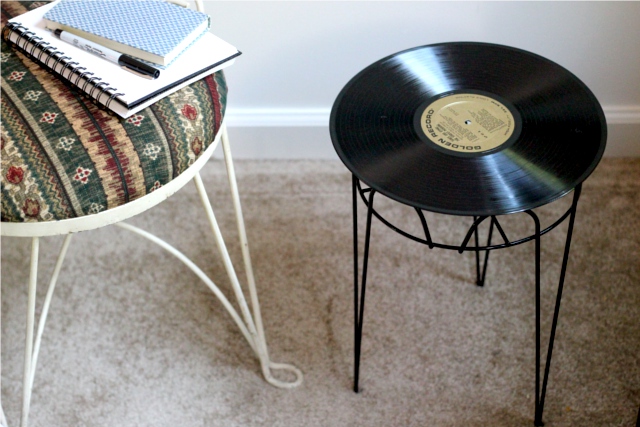Up Your Pastry Game by Making Bear Claws
Many would agree that bear claws are one of the most delicious pastries you can treat yourself to. These indulgent danishes are made with a flaky pastry dough and packed with a spiced almond filling. You can pick some up at your favorite bakery, but they’re even more delicious if you bake them at home.
That said, you can also prepare the dough ahead of time and freeze the unbaked pastries for bear claws on-demand, and I’ve included directions on how to do that in this post.
The Pastry
Bear claws start with a croissant dough. Croissant dough is a laminated, yeasted dough that rises up into lovely, flaky layers. When I need a quick fix, I’ve made the shapes with puff pastry dough, but the light and buttery texture of the finished pastry is just perfect when you use real croissant dough.
The croissant dough has two components: a butter block and dough. The butter block is made by sandwiching several sticks of butter together in one large piece. This piece is wrapped in smooth dough that contains yeast and then laminated to create layers.
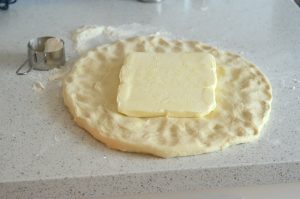
This process can take a bit of time because everything needs to remain cold while you work with it.
Laminating dough is done by folding the dough over in several steps, which are known as turns. The dough-wrapped butter block is rolled out on a smooth surface that has been dusted with flour.
It is then folded into thirds — left side in, then the right side on top of that — and turned 90 degrees to be rolled out again. Roll the dough carefully, as you don’t want any butter to peek through the pastry.
As you become more experienced with the dough, you may be able to make two turns at once, but it is best to stick the dough back in the refrigerator (or freezer, if your kitchen is warm) for a few minutes, to make things easier.
You’ll make a total of four folds, then place the dough in the refrigerator while you prepare the filling.
The Filling
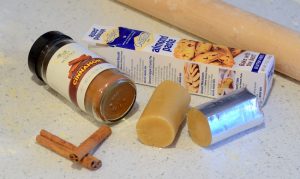
Bear claws are filled with a mixture of almond paste, cinnamon and egg. Almond paste is a thick, sweet mixture made with sugar and almonds that is frequently seen in French pastries. You can find it at some markets, and at specialty baking stores.
The egg is added to hold the filling together, while the cinnamon and salt are added for extra flavor.
Assembly
This recipe makes enough for 8 or so bear claws, as they are fairly large (they are called bear claws, after all, not dog paws!), so divide it in half before you start to roll out. Work with one half at a time on a lightly floured surface, refrigerating the other half while you work.
Each piece of pastry should be rolled into a large, long rectangle at least 16″ long and 6″ wide. It’s OK if your pastry is slightly longer or shorter, as it will only change the look of your finished pastry and not really affect the baking time.
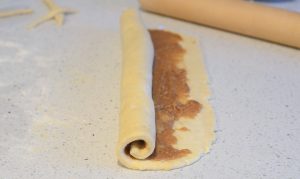
Spread half of the almond filling onto the pastry carefully, using a spatula or offset spatula to move it into an even layer without tearing the pastry. Working with the long side, roll the pastry up into a spiral. Lightly pinch the seam of the pastry so it doesn’t pop open, and rotate the roll until it is seam-side down.
Using a chef’s knife or a bench scraper, cut the long roll into 4 even pieces. If the far ends of the roll are uneven, trim any excess pastry.
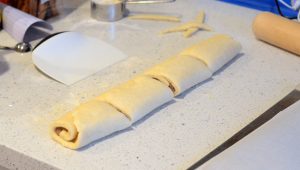
Turning Pastries into Bear Claws
What makes bear claws unique is not the filling, but how the pastries are shaped. After the dough is rolled up and cut into individual pieces, four “fingers” are cut into each piece to turn the pastry into a “paw.”
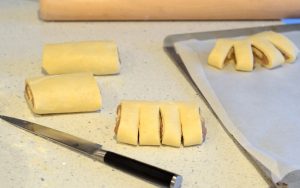
Then, almond “claws” are added to each finger in the paw! Some bakeries skip the claws and simply sprinkle sliced almonds all over the pastry, but individual claws are the way to go here. I used whole almonds that I cut in half, but sliced almonds work just as well.
After baking, the pastries should be allowed to cool slightly before serving. Leftovers can be cooled completely and stored in an airtight bag for the next day.
Planning Ahead
While the dough is time-consuming, you can prepare your bear claws all the way through the shaping process, then freeze the individual pastries. I recommend freezing them on a baking sheet, then wrapping them individually.
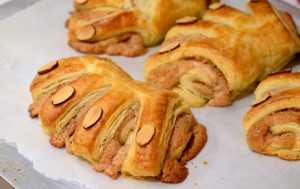
To bake them, unwrap the frozen bear claws and place them on a parchment-lined baking sheet. Let them rise in the refrigerator for 10-12 hours (overnight), then bake in a preheated oven in the morning as directed in the recipe.
Bear Claws Recipe
Makes 8 large pastries
Ingredients
For The Pastry:
- 1½ cups whole milk, warm (100–110 F)
- ¼ cup sugar
- 4½ tablespoons active dry yeast (0.5 ounces/2 envelopes)
- 3¾ cups unbleached all-purpose flour, plus more for work surface
- 2 teaspoons salt
- 1½ cups unsalted butter, cold
For The Filling:
- 2/3 cup almond paste
- ¾ cup powdered sugar
- 1 teaspoon ground cinnamon
- ¼ teaspoon salt
- 1 teaspoon vanilla extract
- 2 large egg whites
For The Topping:
- 24 almond halves or sliced almond pieces
- 1 large egg
Step 1:
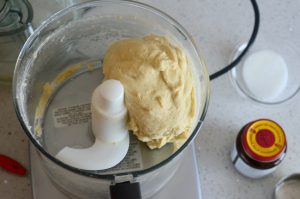
In the bowl of a stand mixer or food processor fitted with a dough hook, combine milk, sugar and yeast. Stir to combine. Add 2 cups flour and stir to combine. Add in remaining flour and salt and mix until a thick dough forms and starts to pull away from the sides of the bowl.
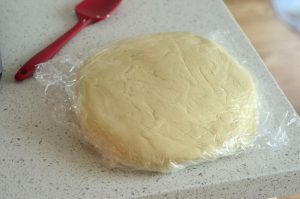
Mix 4-5 minutes, until dough is smooth and supple. Turn dough out onto a lightly floured work surface and knead gently to ensure it is uniform, then wrap in plastic wrap and refrigerate for 1 hour.
Step 2:
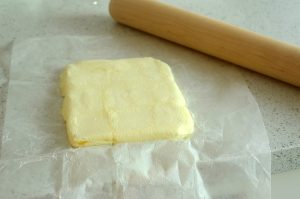
While dough chills, make a butter block. Place sticks of butter next to each other forming a rectangle on a piece of waxed paper. Place a second sheet of waxed paper on top of the butter.
Using a rolling pin, firmly hit the butter to soften and spread it into a 5″ x 8″ rectangle. Press the sticks of butter together if they break apart (due to being so cold) as you work. Chill butter block — wrapped in wax paper — for 45 minutes.
Step 3:
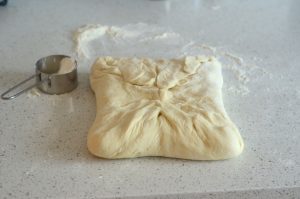
Turn out dough onto a lightly floured work surface and press into a large rectangle that is approximately 10″ x 16″. Place the butter block in the center of the dough and pull the sides in to cover the butter block. Pinch seams to close.
Step 4:
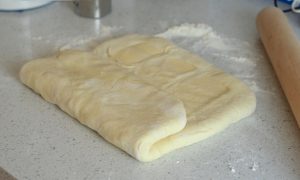
Roll out dough into a thinner rectangle. Fold into thirds — left side in, then the right side on top of that.
Wrap dough in plastic wrap and refrigerate for 30-60 minutes, then remove from the fridge and repeat the process 3 more times (for a total of 4 turns). Wrap dough with plastic wrap and refrigerate for 8-12 hours.
Step 5:
Prepare the filling. Break the almond paste into pieces and place almond paste, sugar, cinnamon, salt and vanilla in a large bowl. Beat until the mixture is very crumbly. Add in egg whites and beat until mixture becomes smooth.
Step 6:
Take dough out of the refrigerator and cut it in half. Working with one half of the dough at a time, roll it out to a 6″ x 16″ rectangle. Use a spatula to spread half of the filling carefully onto the rolled-out pastry.
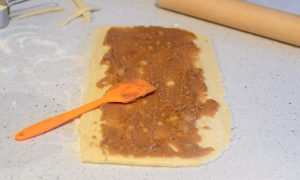
Starting with the long side, roll the pastry up into a tight spiral and pinch the ends to close. Cut off any excess from either end of the roll, then cut roll into 4 equal pastries.
Step 7:
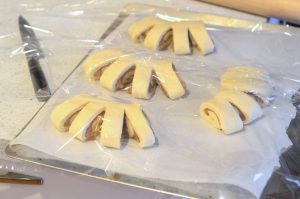
Place pastries seam-side down on a parchment-lined baking sheet. Using a knife, make 4 cuts on one side of each pastry that extend at least 1″ into the pastry to create “fingers.” Curve the pastry into a slight arch to separate the “fingers.” Cover tray loosely with plastic wrap and leave to rise for 2 hours, or until doubled in size. Repeat with remaining dough.
Step 8:
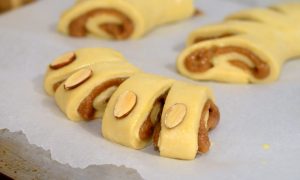
Preheat oven to 400 F. Beat whole egg in a small bowl and brush each pastry with egg. Place one almond half or sliced almond onto each “finger” to form a claw.
Bake for 15-20 minutes, or until deep golden brown. Allow bear claws to cool on a wire rack before serving.
